
I am sure you have heard the saying … “worth its weight in gold”? Well this can hold true to truck drivers. A driver’s skill, experience and behaviour behind the wheel can dramatically impact fuel efficiency, operating costs, and truck longevity.
Driver’s you are the key!
Fuel continues to be one of the largest expenses for trucking companies, increasing fuel efficiency, and minimizing fuel consumption is the goal.
Here are simple steps you can take that can save money on both fuel and repairs:
Drive Conservatively
Maintain a steady and safe speed. Speeding is dangerous, it puts your life and the lives of other road users at risk and has a big impact on fuel economy.
Simply the faster you drive = greater the fuel consumption. By reducing your speed, you will cut your fuel consumption.
Use cruise control when conditions allow, especially on highways and only on dry pavement. Cruise control can limit unnecessary acceleration and deceleration by optimizing the electronic control system’s ability to deliver the appropriate amount of fuel for any given situation, thus improving fuel efficiency.
Braking is inevitable. Avoid sudden brake applications by keeping your eyes ahead of traffic, ensure a safe distance from the vehicle in front of you and be conservative for a stress-free drive. This will also reduce wear on your brake, suspension, and driveline components.
Another tip is to not rest your foot on the brake pedal. This causes premature wear and leads to overheating and poor fuel economy.
Exhaust Brake
By using the exhaust brake system, the weight of the truck and rolling resistance are counter balanced with the engine’s energy, which means a smoother braking process and less wear on the brake components.
Look Ahead and Be Aware
Plan your route and monitor traffic. There are often many alternate routes to get to the same destination. Take the route that requires the least amount of driving to reduce excessive gear changes which equals fuel saved! Fill up at the lower cost fuel stations. Truck navigation systems will plan your route for you to stop at the less-expensive fuel stations along the way.
Improve Aerodynamics and Proper Positioning of your Load
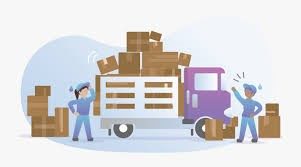 The primary focus for a driver is assuring a balanced weight distribution of cargo and knowing payload limits. Care should always be taken not to overload the vehicle or trailer.
The primary focus for a driver is assuring a balanced weight distribution of cargo and knowing payload limits. Care should always be taken not to overload the vehicle or trailer.
Position the load as low as possible at the centre of the truck and behind the cab to improve aerodynamics.
Your Hino truck was designed with aerodynamics in mind. The exterior has an optimized angled windshield and the front pillars streamlined to reduce drag. A Hino Advantage!
Turn it Off! Excessive idling … wastes fuel, money and increases emissions
Excessive idling burns fuel. An idling truck can waste up to 2 litres of fuel per hour.
Anytime the engine is running and not being used to pull the vehicle forward, it hurts your fuel numbers. Only idle your truck when necessary.
Upon warm up, once the engine is running smoothly, begin driving – gently. Remember that on cold winter days this may take a little longer.
If you have a long wait perhaps awaiting to deliver the essentials goods and you are not in traffic, it is better to turn off the engine and start again later.
More and more fleets are taking advantage of idle shutdown settings after 2 to 15 minutes which eliminates higher idling rates.
Monitor Tire Pressure
During daily vehicle pre-checks and after your shift, check the tire pressure as per manufacturer standards. Underinflation causes tire wear and wastes fuel. Please refer to Hino’s driver tips on tire maintenance.
Keep up to date with your Trucks Maintenance Schedule
Keep your vehicle tuned up and in top shape. A dirty air cleaner, improper valve clearance, brakes out of adjustment, improper alignment, bad fuel, etc… all lower engine performance and contribute to poor fuel economy. For longer life of all parts and lower operating costs, keep all maintenance work on schedule, and if you often drive under severe conditions, see that your vehicle receives more frequent maintenance.
Hybrid Vehicles
Hybrid technology is most beneficial to drivers and businesses that operate primarily in urban areas or in stop-and-go applications such as refuse trucks, parcel delivery trucks, and utility trucks.
 The Hino 195H comes equipped with a hybrid traction motor that assists the Hino diesel engine during times of high load, reducing fuel consumption and greenhouse gas emissions. Learn more of Hino’s Hybrid vehicle.
The Hino 195H comes equipped with a hybrid traction motor that assists the Hino diesel engine during times of high load, reducing fuel consumption and greenhouse gas emissions. Learn more of Hino’s Hybrid vehicle.
Lastly, driver’s you are the key! One of the best ways to improve fuel efficiency is to make it a priority. Keep these tips in mind and practise them while you are on the road. Soon, you will be maximizing your fuel efficiency without even realizing it.










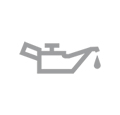
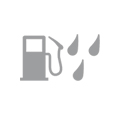
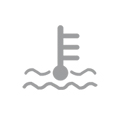



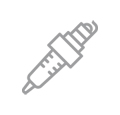

 The primary focus for a driver is assuring a balanced weight distribution of cargo and knowing payload limits. Care should always be taken not to overload the vehicle or trailer.
The primary focus for a driver is assuring a balanced weight distribution of cargo and knowing payload limits. Care should always be taken not to overload the vehicle or trailer. The Hino 195H comes equipped with a hybrid traction motor that assists the Hino diesel engine during times of high load, reducing fuel consumption and greenhouse gas emissions. Learn more of
The Hino 195H comes equipped with a hybrid traction motor that assists the Hino diesel engine during times of high load, reducing fuel consumption and greenhouse gas emissions. Learn more of 





